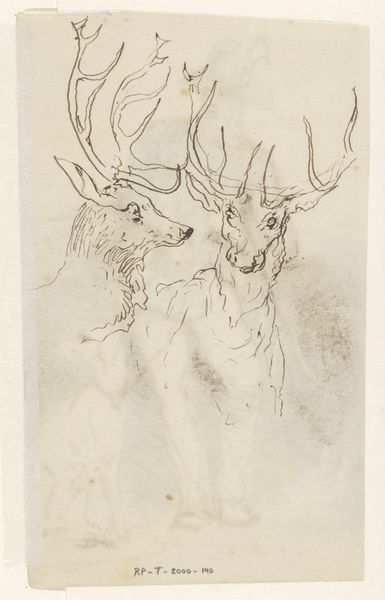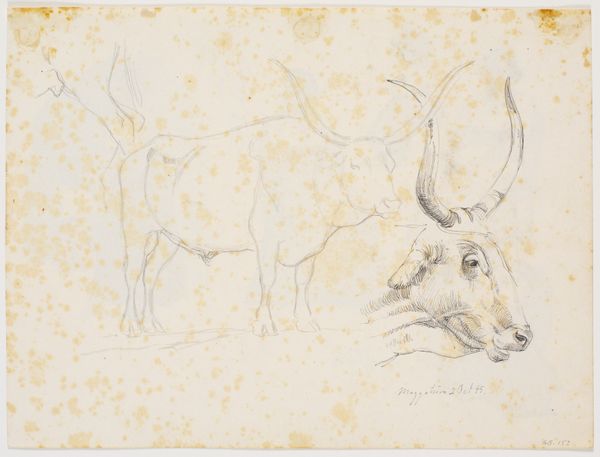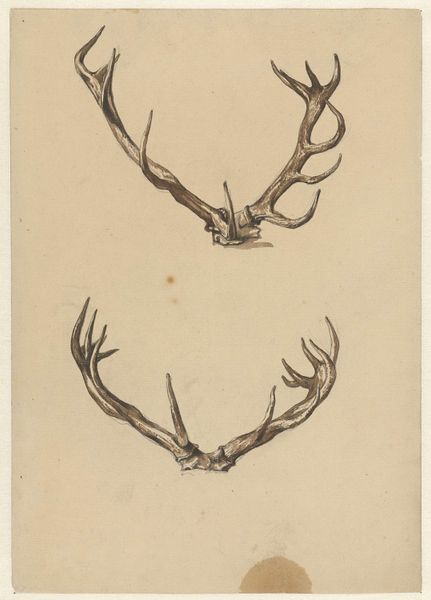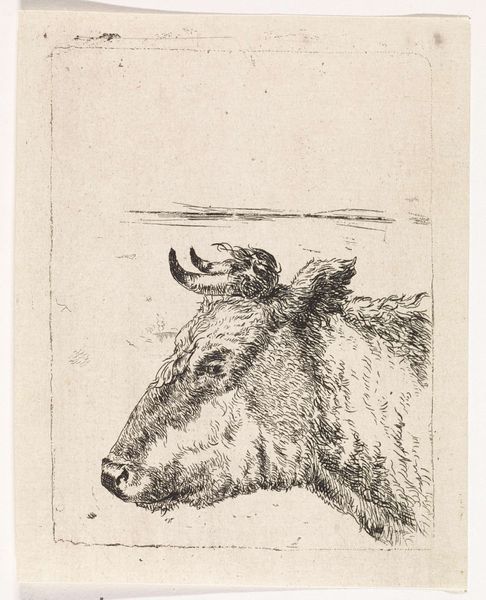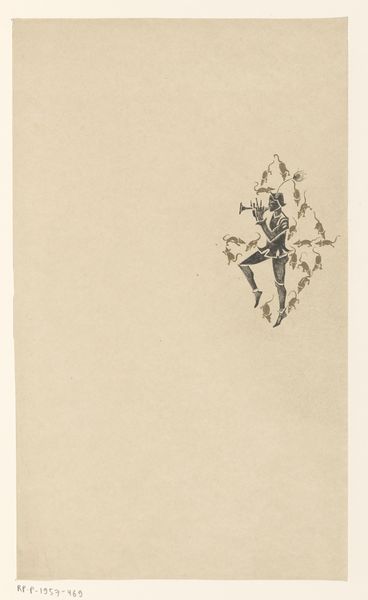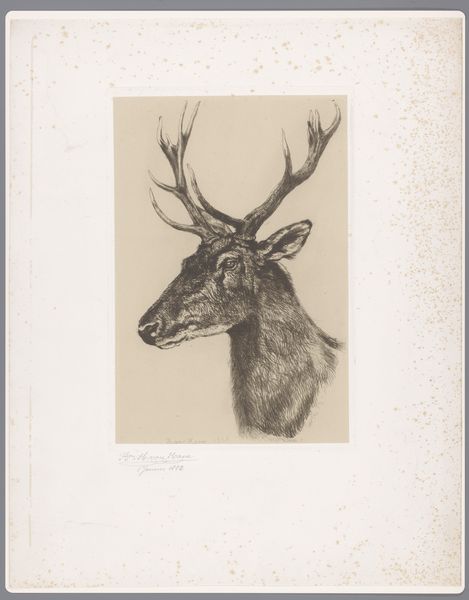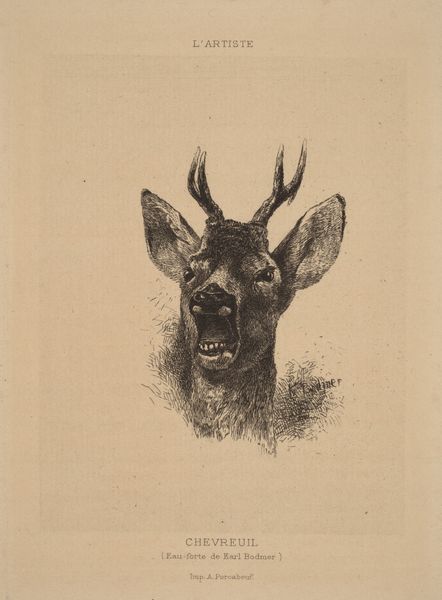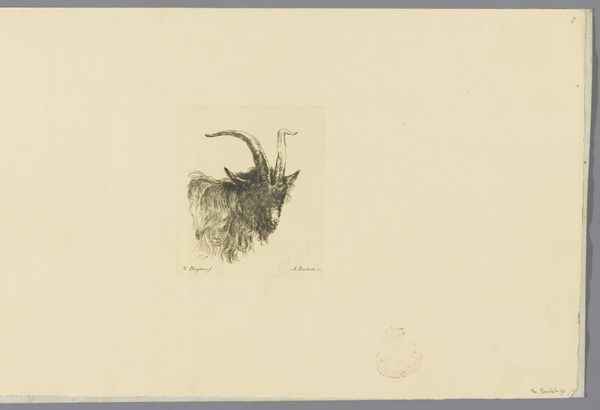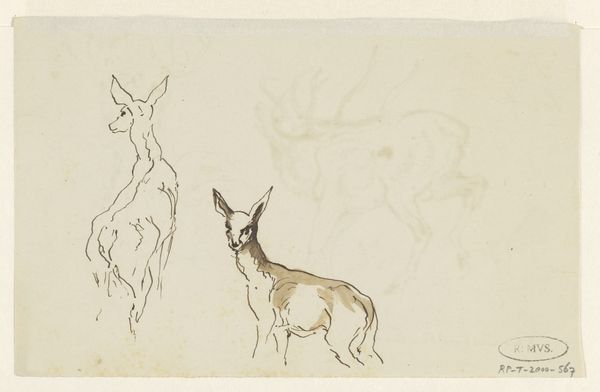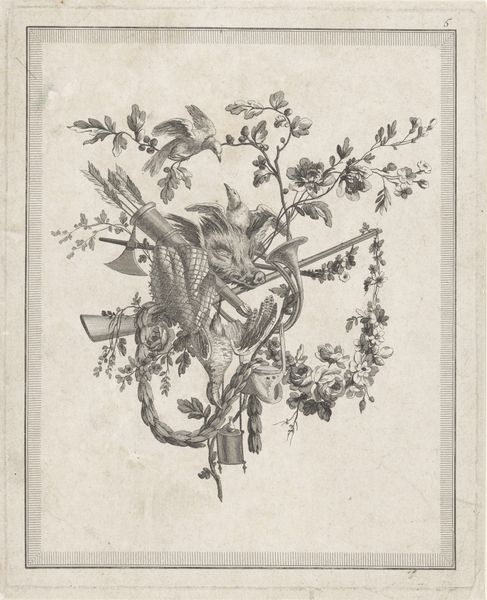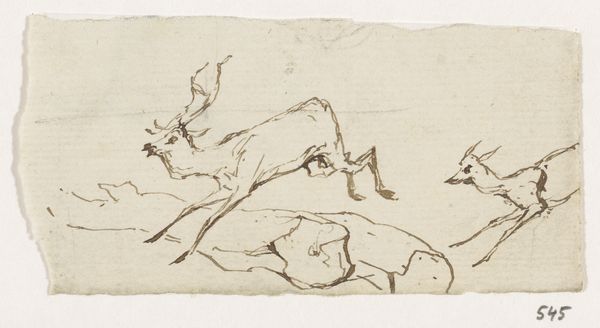
Bagside af omslag til M. Hammerichs oversættelse af Kalidasas' "Sakuntala", (Kbh. 1845) 1844
0:00
0:00
drawing, print, ink, engraving
#
drawing
#
ink drawing
#
animal
# print
#
figuration
#
ink
#
engraving
Dimensions: 262 mm (height) x 163 mm (width) (bladmaal)
Curator: This is Johan Thomas Lundbye’s engraving from 1844, titled "Back Cover for M. Hammerich’s Translation of Kalidasa's 'Sakuntala'." Editor: Striking image! It gives the impression of both delicacy and restrained power. The subtle tonal variations of the ink against the paper's backdrop create an unusual level of contrast. Curator: Lundbye, as a product of his time, was undoubtedly influenced by the burgeoning interest in non-Western cultures. The 'Sakuntala' was, after all, a prominent piece of Sanskrit literature making its way into European intellectual circles. It’s an intriguing piece of cultural exchange when viewed from today’s perspective. Editor: The composition is quite interesting as well, a central image framed by vegetal forms, the lines are very deliberate, aren’t they? Notice how they both enclose and delineate the space? Curator: Exactly. Look at the way the organic border interacts with the central image. This was originally designed for print as part of a book cover, meant for mass production and consumption within specific socio-economic spheres, impacting what sort of messages would reach that intended readership. Editor: Indeed. Beyond this context, what strikes me, formalistically speaking, is the careful attention to the graphic quality. The cross-hatching is exquisite in its detail. Curator: It speaks to the way that artworks mediate cross-cultural communication in 19th century Denmark, what would an everyday citizen be seeing on these covers and thinking about these regions of the world as a result? Editor: Ultimately, that cultural mediation occurs in a manner reliant on careful distribution of tone and form to create a striking aesthetic experience, as seen with the subject, line and the tonal palette being considered. Curator: So, we depart not only having gleaned understanding of the historical contexts, but additionally aware of print media as a communicative force during its era. Editor: A balanced observation, I feel. Thank you.
Comments
No comments
Be the first to comment and join the conversation on the ultimate creative platform.

